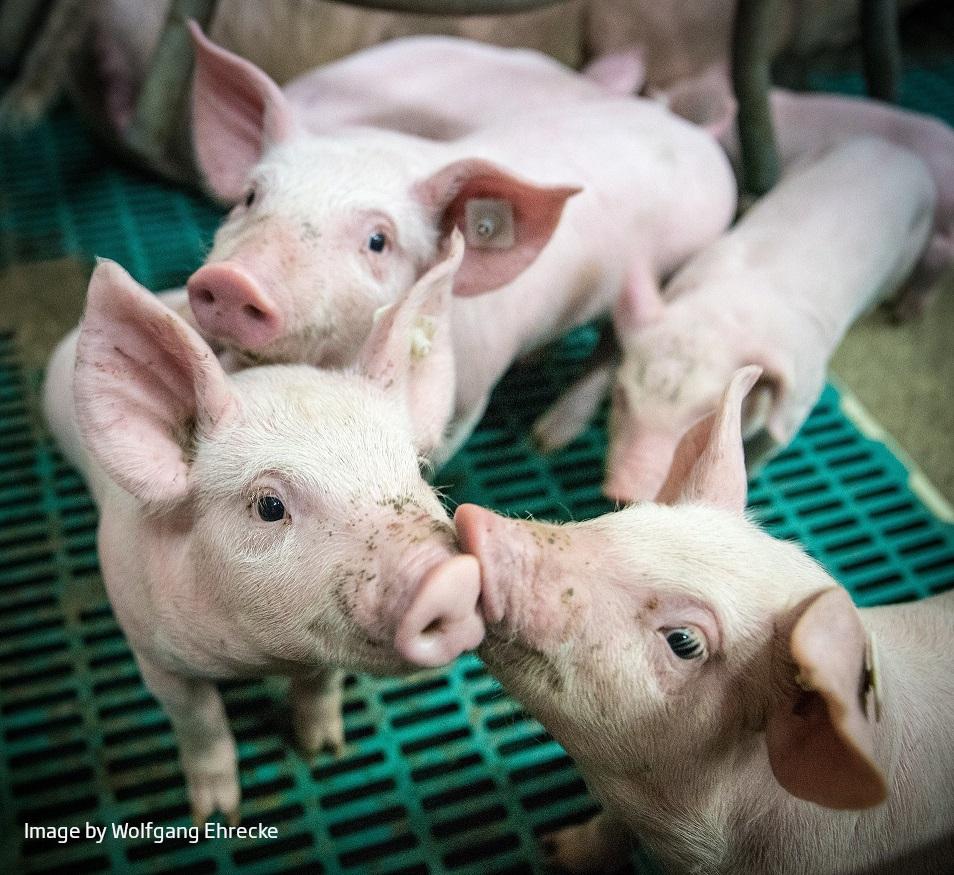How to avoid post-weaning diarrhea in piglets without zinc oxide?
You are here

To reduce the risk of diarrhea and support piglet growth, high levels (3100ppm) of ZnO are included in the piglet feed for 2 weeks post-weaning. However, as Zn is poorly absorbed, it becomes highly concentrated in manure, increasing environmental impact due to mineral excretion and a risk of altering bacterial composition in the gut.
To minimize this risk, EU authorities decided that by 2020, the ZnO inclusion must be kept to 150 ppm advised as the nutritional requirement for zinc in pigs.
Question now, how to handle this postweaning period?
Zinc is the second most abundant trace element in the body of animals, distributed in every tissue throughout the body. The prostate and eye have the highest concentrations of zinc. The lowest concentrations are found in the body fat.
As trace element, zinc affects a diverse number of processes, and a deficiency results in reduced growth rate, dermatitis, deformed bones, slowed development of secondary sex characteristics, slowed wound healing, and impaired immune function in species studied.
For growing pigs, zinc (Zn) is playing an importing role in the metabolism of swine. It is a multifunctional element required for pig health, production and reproduction. Zinc not being stored widely in the body, a continuous supply with the diet is required. This especially in pigs as pig diets contain high amount of phytase, an enzyme binding Zn, forming an insoluble chelate that cannot be absorbed in the intestine.
The presence of other inorganic elements like Fe, Cu and Ca in higher quantity also block absorption of Zn in the intestine.
In the late 80’s it was discovered that feeding pharmaceutical concentrations (1500 to 3100 ppm) of ZnO to weaning piglet resulted in reduced diarrhoea and stimulated the growth. Although the mechanism by which zinc oxide elicits this effect is still poorly understood, it is since 2005 in most EU member states licensed as medicinal product.
But despite the many positive effects, its contribution to the increase of antimicrobial resistance, the change on the piglets’ microbiota, accumulation of zinc ions in vital organs and environmental issues are the main reasons why the European Union decided to ban the use of zinc oxide by 2022.
Growing piglets after the Zinc Oxide ban
Post-weaning diarrhoea is a problem for pig producers all around the world. With both antibiotics and now zinc oxide being removed from piglet diets in the EU, there is an urge for new strategies to handle this problem in piglets.
At the Zero Zinc summit, organized in Copenhagen earlier this year, a general conclusion was there is no nutritional silver bullet for zinc oxide replacement. The experts present agreed a multi-faceted approach is required:
1. Improve pre- and post-weaning management so that pig health is improved
Weaning is a very stressful time for piglets as their environment and diet change significantly. Where possible, minimise stress by gradually introducing change to the diet, and making the environment as comfortable as possible for them.
2. Do correctly what we already know should be done
Biosecurity and hygiene are so important to the welfare standards of the animals and there are a few reasons why you have to have a stringent plan in place.
- A thorough sanitation
- A clean water and feed supply
To keep your pigs healthy, it is vital they always have access to a clean water supply and feeding area - Pest control
Having a high standard of pest control helps you to reduce the risk of infection and disease through a foreign body (a pest) being present within the main areas your pigs reside.
3. Nutritional modifications of diets
Diet composition and nutrition strategies can help to reduce gut health problems in the period around weaning and support the functional development of the gut.
Discussed at the Zero Zinc event is lowering the level of dietary crude protein as a feeding strategy that can help reduce the incidence of PWD in piglets. An additional benefit of reducing protein levels is that nitrogen excretion is reduced.
4. Use of dietary supplements
Contrary to the medicinal use of zinc oxide, the use of feed additives should be considered alternatives enhancing gut health, hence preventing pigs from developing diarrhea.
- Microbiome diversity
Feeding probiotics will stimulate the proliferation of lactic acid-producing organisms or other beneficial microorganisms that help to create a healthy gut environment.A similar effect can be expected when feeding butyrate to piglets. Research shows butyrate has a positive effect in the endogenous microbiota of post-weaning pigs increasing both, the diversity of bacterial families and the abundance of lactic acid bacteria during the post-weaning period.
- Immune support
Dietary inclusion of short chain fatty acids (SFCA) has shown to have positive effects on the immune systems, inhibiting the growth of pathogenic bacteria. It is shown butyrate not only promotes villi growth and improves the absorption but is also involved in the repair of damaged cells.Next to short chain fatty acids, also hydrolysable tannins have several effects on both the immune system (antioxidant and antiradical effects) and the microbiological flora (inhibition of E coli, Salmonella among others and positive effect on the growth of Lactobacillus).
- Acidification
Supplementation of organic acids helps reducing the colonization of pathogens in the intestines. This reduction as a result from a decrease of the pH value and the buffering capacity of the feed, inhibition of gram-negative indigenous microflora in the gastrointestinal tract.Organic acids supplied via the drinking water will besides providing intestinal benefits also improve the quality of the water by preventing microbial growth.
Conclusion
While there is no direct replacement, promotion of gut health and immunity helps prevent diarrhea. Producers and nutritionists will have to focus on management techniques and dietary solutions to support gut health of piglets at weaning.
Author:
Bart De Meue - freelance marketing
Commissioned by Sanluc International nv.